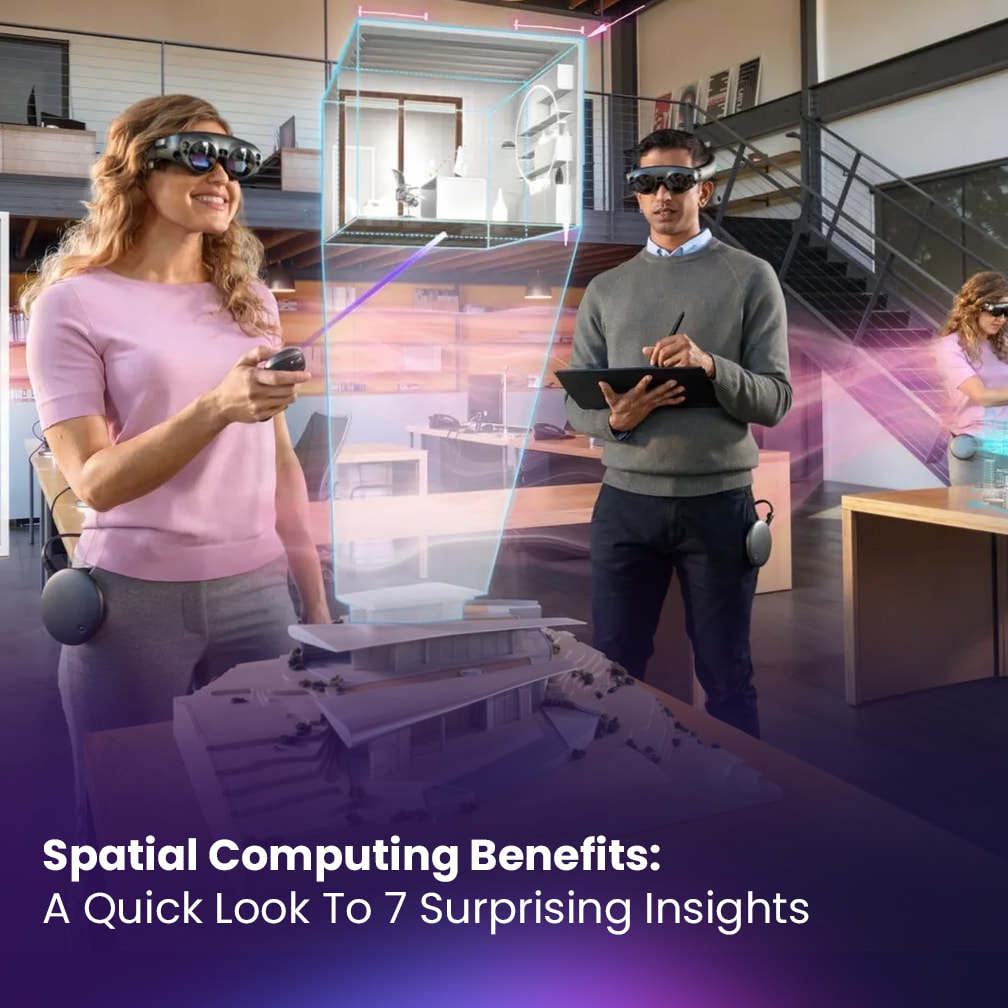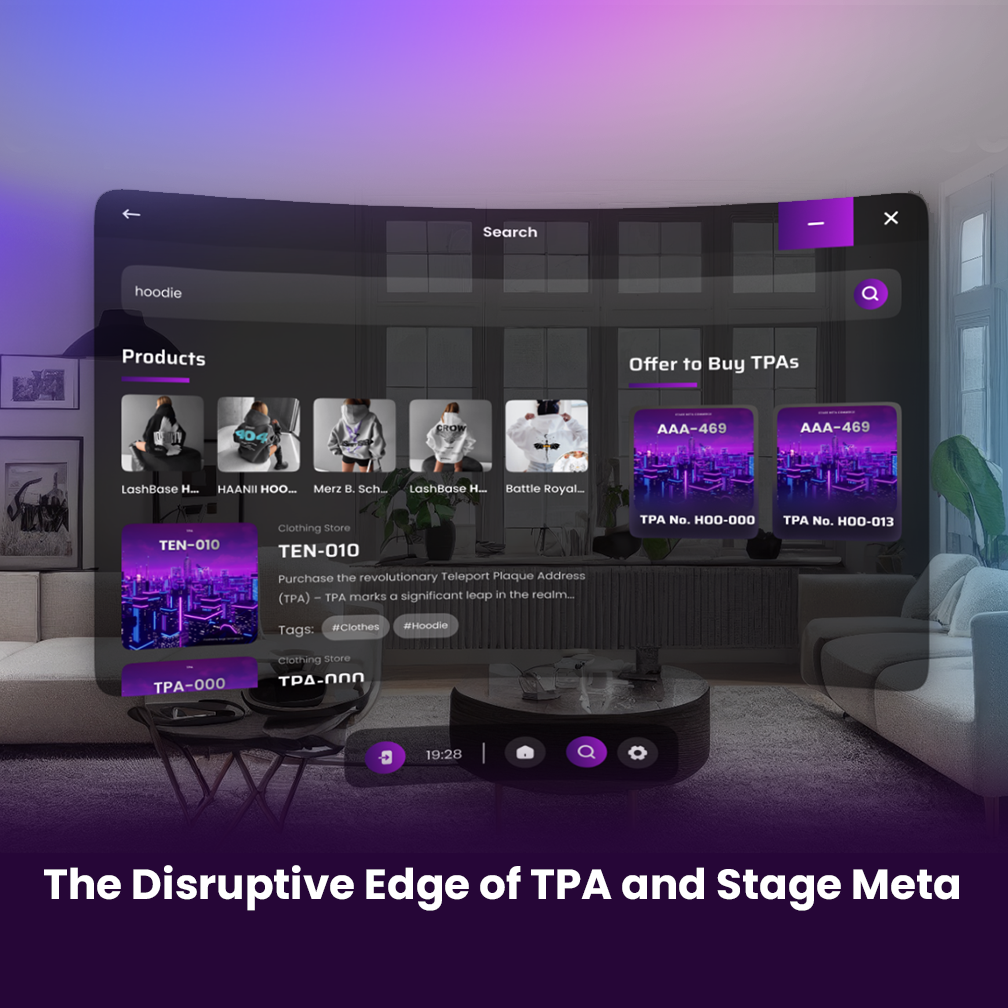Navigating the Future: The Essential Guide to Spatial Computing for Leaders

Table of contents
- Introduction
- Understanding Spatial Computing
- Strategic Implications for Leaders
- Navigating the Challenges
- Conclusion: Embracing Spatial Computing
- FAQs
- What exactly does spatial computing mean, and why is it significant?
- Can you explain what TPA (Teleport Plaque Address) is and its role in Spatial Computing?
- What are the key advantages of owning a TPA?
- How can one acquire a TPA, and what makes now the best time to do so?
- How can businesses leverage TPA in their strategy?
- What does the future hold for spatial computing and TPA?
Introduction
In an era where the fusion of digital and physical realms is increasingly prevalent, spatial computing emerges as a transformative force, redefining the landscape of interaction, engagement, and business operations. As leaders in this digital frontier, understanding spatial computing’s potential and integrating its principles into organizational strategies is paramount.
Understanding Spatial Computing
Spatial computing is a broad term encompassing technologies that allow humans to interact with digital content in 3D space. This includes augmented reality (AR), virtual reality (VR), mixed reality (MR), and other technologies that blend physical and digital worlds. It’s a shift from the traditional 2D interfaces to immersive experiences that replicate or enhance physical environments.

The Evolution of Spatial Computing
From the early days of personal computing to the mobile revolution, technology has continually evolved to offer more integrated and immersive experiences. Spatial computing represents the next leap, moving beyond screens to interactions with digital content in the world around us. This evolution promises to revolutionize how we live, work, and interact, with Stage Meta leading the charge by offering platforms that blend reality and digital worlds seamlessly.
The Role of TPA in Spatial Computing
At the heart of this revolution is the Teleport Plaque Address (TPA), a unique address system designed for the spatial computing era. It simplifies navigating digital spaces, offering a precise and user-friendly method to identify locations within 3D environments. For leaders, understanding and leveraging TPA’s potential is crucial for crafting strategies that harness spatial computing’s power.

Strategic Implications for Leaders
Leaders must recognize the strategic implications of spatial computing and TPA’s role within it. Here are key considerations:
Enhancing Customer Engagement
Spatial computing offers unparalleled opportunities for enhancing customer engagement. By creating immersive experiences, businesses can offer customized interactions, improve product visualization, and elevate the overall customer journey. TPA enables easy access to these digital spaces, making it an essential tool for businesses looking to capitalize on spatial computing.
Transforming Business Operations
Beyond customer engagement, spatial computing can transform business operations. From training and development to remote collaboration and beyond, the ability to interact with digital content in a 3D space offers efficiency and effectiveness improvements. Leaders should explore integrating spatial computing into their operational strategies to drive innovation and productivity.
Navigating the Challenges
The shift to spatial computing also presents challenges, including the need for standardized systems like TPA for navigation and the integration of physical and digital environments. Leaders must foster innovation culture, invest in right tech, and prepare for spatial computing’s changes.

Conclusion: Embracing Spatial Computing
As we stand on the brink of a new digital era, leaders have the opportunity to pioneer the integration of spatial computing into their strategic visions. Leaders, by grasping TPA’s potential and spatial computing’s power, can shape and navigate the future effectively. The journey into spatial computing isn’t just adopting new technologies but reimagining digital and physical integration for a better future.
FAQs
What exactly does spatial computing mean, and why is it significant?
Spatial computing refers to a set of technologies that enable human-computer interaction within 3D spaces. It integrates digital content and interactions into the physical world, including augmented reality (AR), virtual reality (VR), and mixed reality (MR). This shift from traditional 2D interfaces to immersive 3D environments is significant because it opens up new possibilities for interaction, engagement, and understanding of digital content, promising to revolutionize industries by enhancing user experiences and creating new ways to connect and interact.
Can you explain what TPA (Teleport Plaque Address) is and its role in Spatial Computing?
TPA, or Teleport Plaque Address, is a unique address system designed specifically for the spatial computing era. It eases the process of navigating and identifying locations within 3D digital environments by using a unique combination of letters and numbers to create easy to remember addresses. TPA is crucial for enhancing user experience in Spatial Computing, providing a precise and standardized location identification method.
What are the key advantages of owning a TPA?
Owning a TPA offers several advantages, including strategic holding potential due to its appreciating value, access to a distribution pool for earning opportunities, and the chance to harness Meta Energy for immersive experiences. It’s a vital asset in spatial computing, providing financial opportunities and access to improved digital environments.
How can one acquire a TPA, and what makes now the best time to do so?
TPA can be purchased through the Stage Meta platform by selecting a unique combination and completing the purchase. Now is the best time to acquire a TPA due to limited availability and spatial computing’s increasing importance. Finally, early adopters have access to the best TPAs and can maximize potential financial and strategic benefits.
How can businesses leverage TPA in their strategy?
Businesses can leverage TPA by reserving unique addresses to establish a distinctive presence in digital spaces, enhancing brand protection, and creating customized solutions for virtual interaction. TPAs give businesses a competitive edge in spatial computing, engaging customers innovatively and building immersive brand experiences.
What does the future hold for spatial computing and TPA?
The future of spatial computing, with TPA at its core, promises a more integrated, immersive, and interactive digital world. As technologies evolve, TPA will standardize navigation and interaction in 3D spaces, driving innovation in user experience and opening new business, education, and entertainment avenues. Stage Meta and TPA’s strategic use shape spatial computing, offering limitless digital possibilities for the future.
Estimated reading time: 5 minutes









1 Comment
[…] Navigating the Future: The Essential Guide to Spatial Computing for Leaders […]